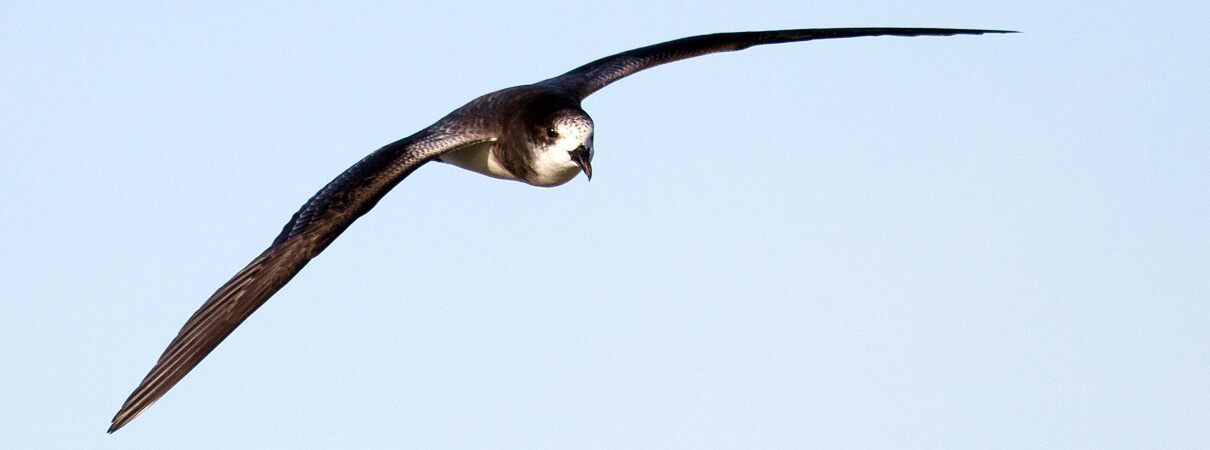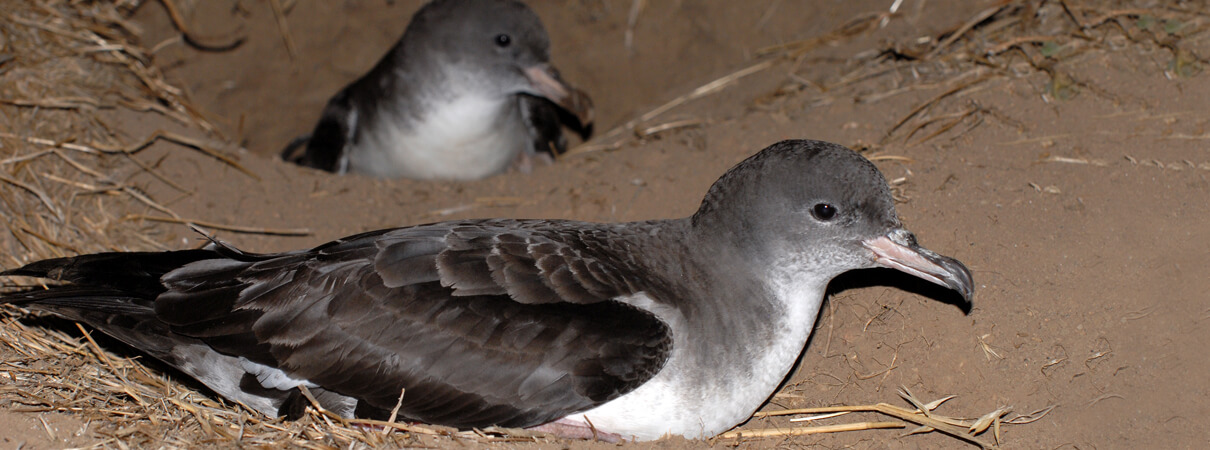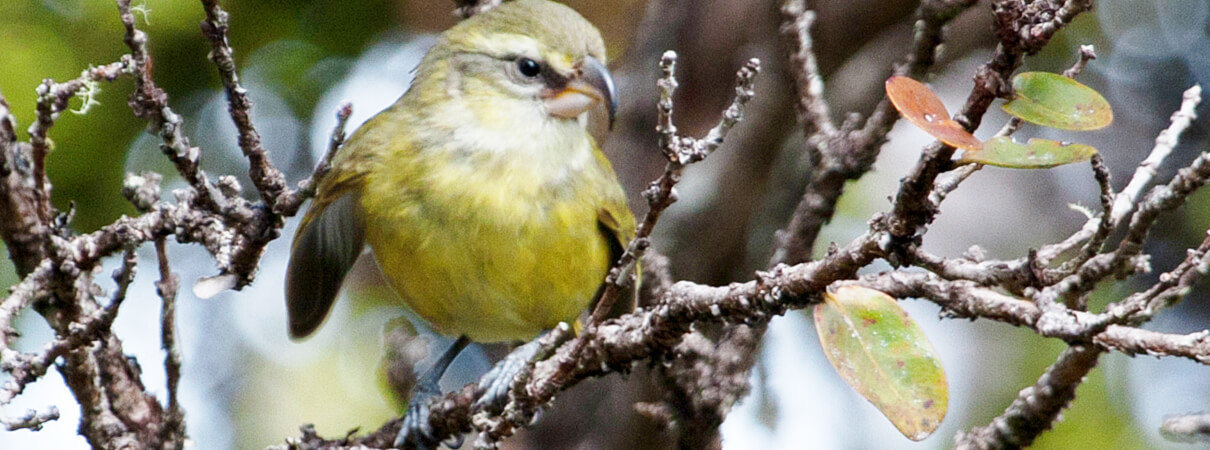Island Birds, Unique and Vulnerable, Need Our Help
An undisturbed seabird island is one of nature's amazing spectacles. Early in my career, I spent time on Laysan Island in the Northwest Hawaiian Islands, where hundreds of thousands of albatross danced in courtship through the day, and thousands of Bonin Petrels returned to the island at sunset.

Bonin Petrel by Robby Kohley
But Laysan taught me something else about island birds: They are fragile. Less than a century ago Laysan was almost devoid of seabirds, and three species found only on Laysan — the island's Millerbird, Honeycreeper, and Rail — went extinct.
Almost 90 percent of all recorded bird extinctions in the last 500 years have occurred on islands. Why? Because most island birds have evolved without mammalian predators. As a result, island species are naïve to non-native, terrestrial predators, and their populations are quickly devastated by introduced mammals such as domestic cats and rats.
Insular Island Habitats
Island birds are simply ill-equipped to evade these unexpected neighbors: Think of the flightless Dodo from the island of Mauritius. Or the Laysan Finches that would, full of curiosity, land on my hat as I tried to count them.
Most seabirds breed on islands, and these insular habitats have changed them, too. Seabirds lay fewer eggs than land birds and spend more time rearing their chicks. They can do this because, for millions of years, they didn't have to worry about terrestrial predators.

Pink-footed Shearwaters in a nest burrow. Photo by Peter Hodum
But living life in the slow lane also means seabird populations take longer to recover from losses. They are among the most threatened of all bird groups, and land-based threats continue to lead to declines.
At Risk, But Also Resilient
But there's hope; Laysan Island also taught me that. Once the harvesting and sale of albatross feathers and eggs was stopped, and invasive rabbits were removed, the remaining birds rebounded. And today, thanks to ABC and partners, the Millerbird is thriving once again on Laysan, with translocated birds from Nihoa filling the void left by the disappearance of the closely related Laysan Millerbird subspecies.
It is this resilience that inspires ABC to collaborate with our partners to protect threatened island birds and their habitats across the Americas. In Hawai‘i, we are controlling predators and restoring habitat to protect rare land birds such as Palila and Maui Parrotbill, and using these same methods to protect seabirds such as Hawaiian Petrels and Laysan Albatross.

Maui Parrotbill juvenile by Robby Kohley
In the Juan Fernández Islands in Chile, we are working with partners to remove invasive predators and increase support for the conservation of threatened Pink-footed Shearwaters. And in the Galápagos Islands, we are investigating new nesting areas for the Galápagos Petrel and developing innovative ways to protect this critically endangered species.
History tells us that islands are the epicenters of extinction. Yet we also have the tools and the knowledge to save island species and make them beacons of conservation success. The sight of seabirds blanketing the entire island of Laysan may be an exception to the norm — but it doesn't have to be.
This article first appeared in the winter 2017-18 issue of Bird Conservation magazine. ABC's efforts to protect seabirds are made possible by the generous support of Lynn and Stuart White, the National Fish and Wildlife Foundation, the David and Lucile Packard Foundation, the Disney Conservation Fund, and the Martin Foundation.
 | Brad Keitt is ABC's Oceans and Islands Program Director. He has conducted research on all of the Baja Pacific Islands, as well as islands in Alaska, Hawaii, California, the tropical Pacific, and the Caribbean. Brad was a founding member of Island Conservation. |


















































